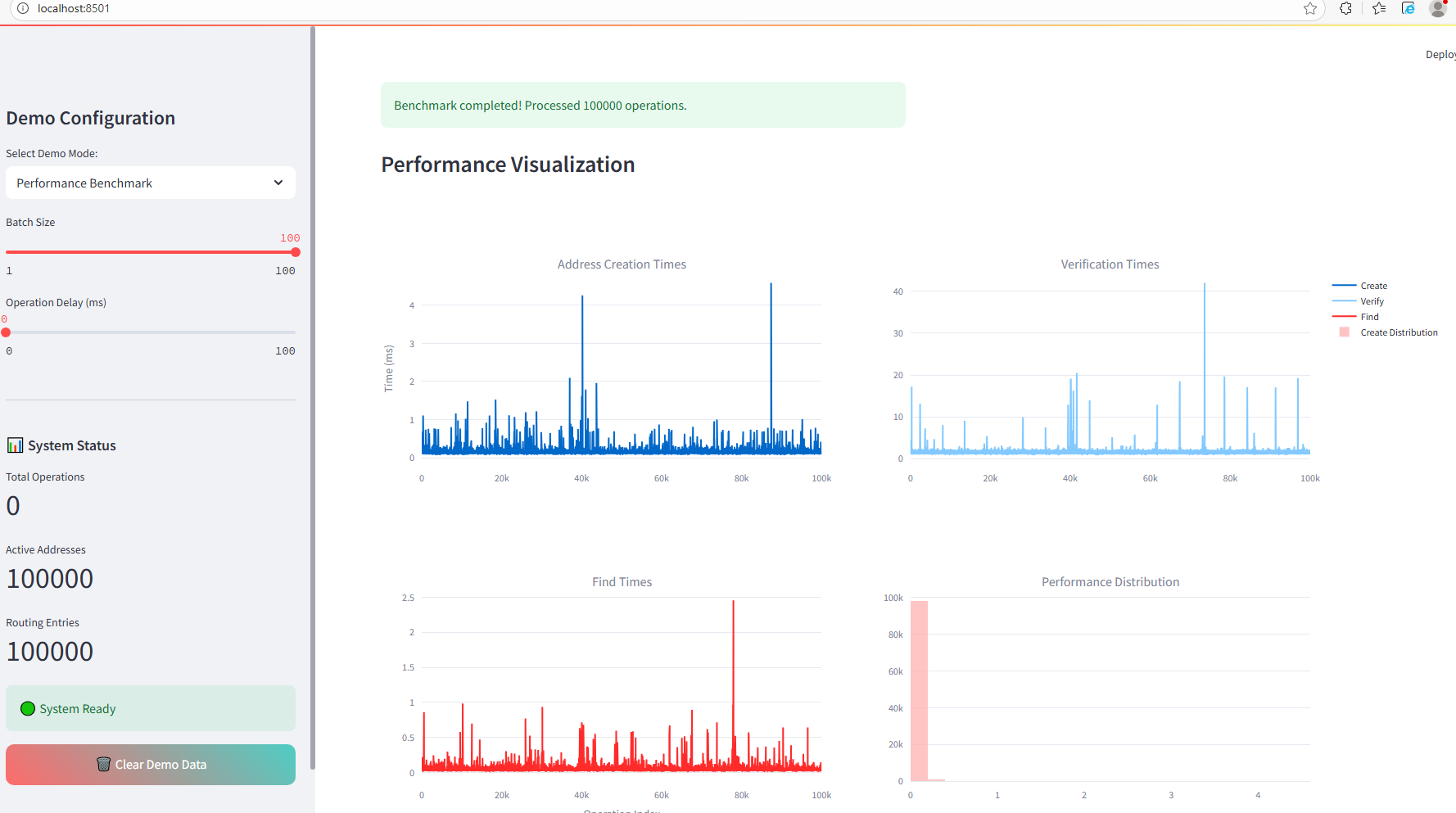- From: Amir Hameed <amsaalegal@gmail.com>
- Date: Sat, 20 Sep 2025 07:39:23 -0700
- To: Manu Sporny <msporny@digitalbazaar.com>
- Cc: public-credentials@w3.org
- Message-ID: <CANGYBsz6UepLGvaWjmj0DoX3abt9Tyy+GqkhYiXE6SGUxhQwiw@mail.gmail.com>
Here’s a snapshot of UDNA’s performance benchmark — 100k addresses and routing entries created, verified, and resolved dynamically On Sat, 20 Sept 2025 at 07:27, Amir Hameed <amsaalegal@gmail.com> wrote: > Kindly find attached is another screenshot of how UDNA header works. > > On Sat, 20 Sept 2025 at 07:18, Amir Hameed <amsaalegal@gmail.com> wrote: > >> Thanks again for the references—they’re really helpful. I wanted to >> clarify how *UDNA* relates to *did:nostr*, since they actually operate >> at different layers. >> >> At a high level: >> >> - >> >> *did:nostr* is a DID Method. It defines how a DID is created, >> resolved, and managed on the Nostr network. It’s all about identity—proving >> who you are and which keys belong to you—not about routing data. >> - >> >> *UDNA* is a networking framework. It treats DIDs as first-class >> primitives for *addressing and routing*, effectively replacing IPs. >> It doesn’t care how the DID is created—you could use did:nostr or any other >> DID—but focuses on how to send messages to that DID across the network. >> >> You can think of it like this: a did:nostr is a “phone number” you >> control, and UDNA is the “phone network” that actually routes the calls. >> >> A UDNA packet uses DIDs in its header and can include fields like >> RouteHint, KeyHint, Nonce, and Signature. Routing and discovery are handled >> dynamically via a *DHT overlay*, so the underlying IPs can change >> without affecting reachability. >> >> UDNA and did:nostr aren’t competing—they’re complementary. UDNA could >> even use did:nostr as its identity layer while providing a *secure, >> transport-agnostic, identity-native network layer*. >> >> Best, >> Amir Hameed >> >> On Sat, 20 Sept 2025 at 07:04, Manu Sporny <msporny@digitalbazaar.com> >> wrote: >> >>> On Sat, Sep 20, 2025 at 9:41 AM Amir Hameed <amsaalegal@gmail.com> >>> wrote: >>> > At a high level, the minimal viable implementation of UDNA would focus >>> on addressing and routing based on cryptographic identities (DIDs) rather >>> than network locations. This doesn’t require building a full alternative to >>> TCP/IP or UDP, but rather an overlay layer on top of existing transport >>> protocols in a transport-agnostic way. >>> >>> Got it, the screen shots helped. That makes sense. >>> >>> The work you're doing reminds me a lot of Telehash, which we built the >>> first DID implementation on top of many years ago: >>> >>> >>> https://github.com/telehash/telehash.github.io/blob/master/v3/spec/v3.0.0-stable.pdf >>> >>> It also reminds me of what the did:nostr folks are trying to do, some >>> of whom are on this mailing list. How would you characterize what you >>> are working as it relates to nostr? >>> >>> -- manu >>> >>> -- >>> Manu Sporny - https://www.linkedin.com/in/manusporny/ >>> Founder/CEO - Digital Bazaar, Inc. >>> https://www.digitalbazaar.com/ >>> >>
Attachments
- image/png attachment: Screenshot__255_.png

Received on Saturday, 20 September 2025 14:39:42 UTC